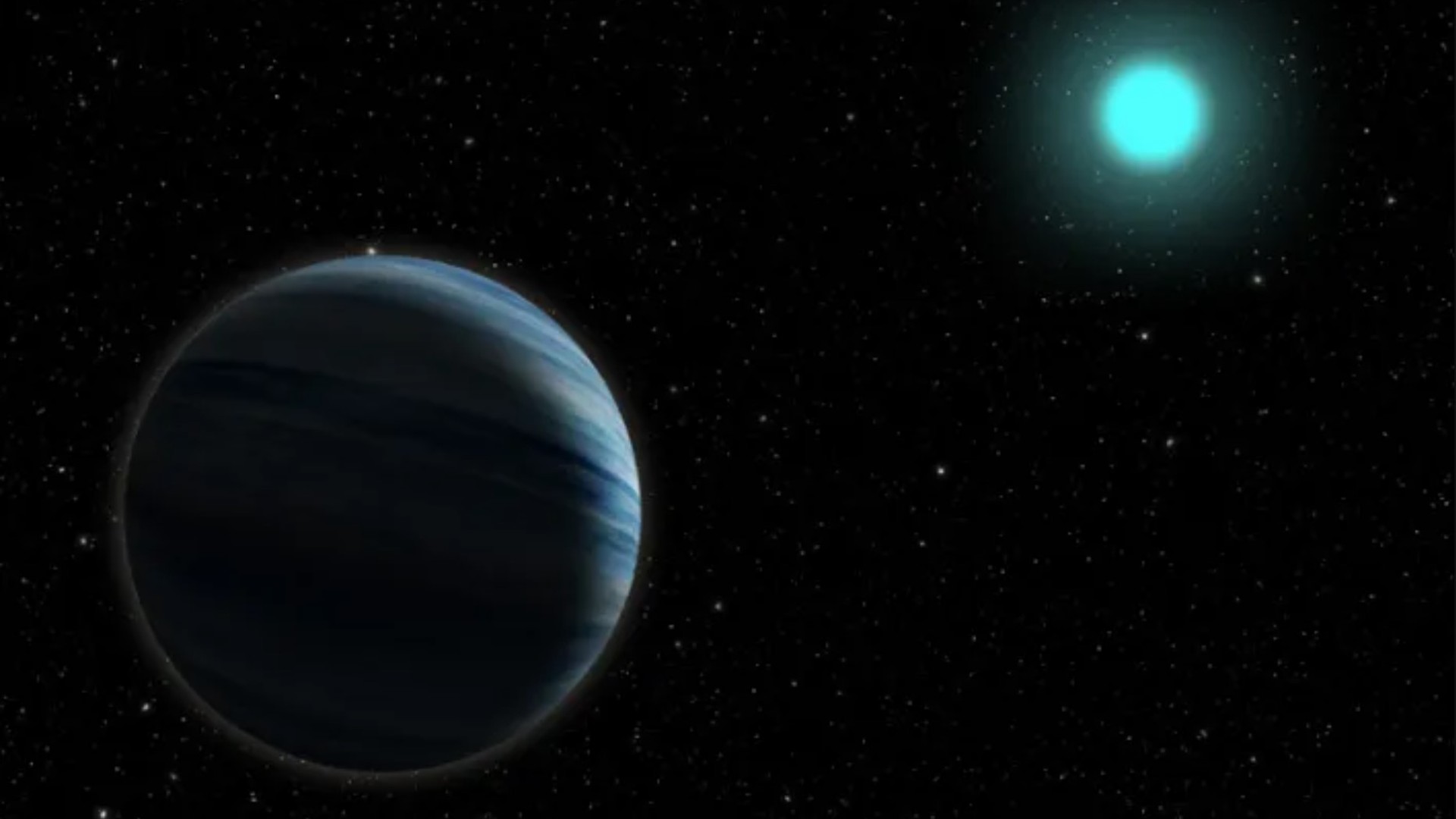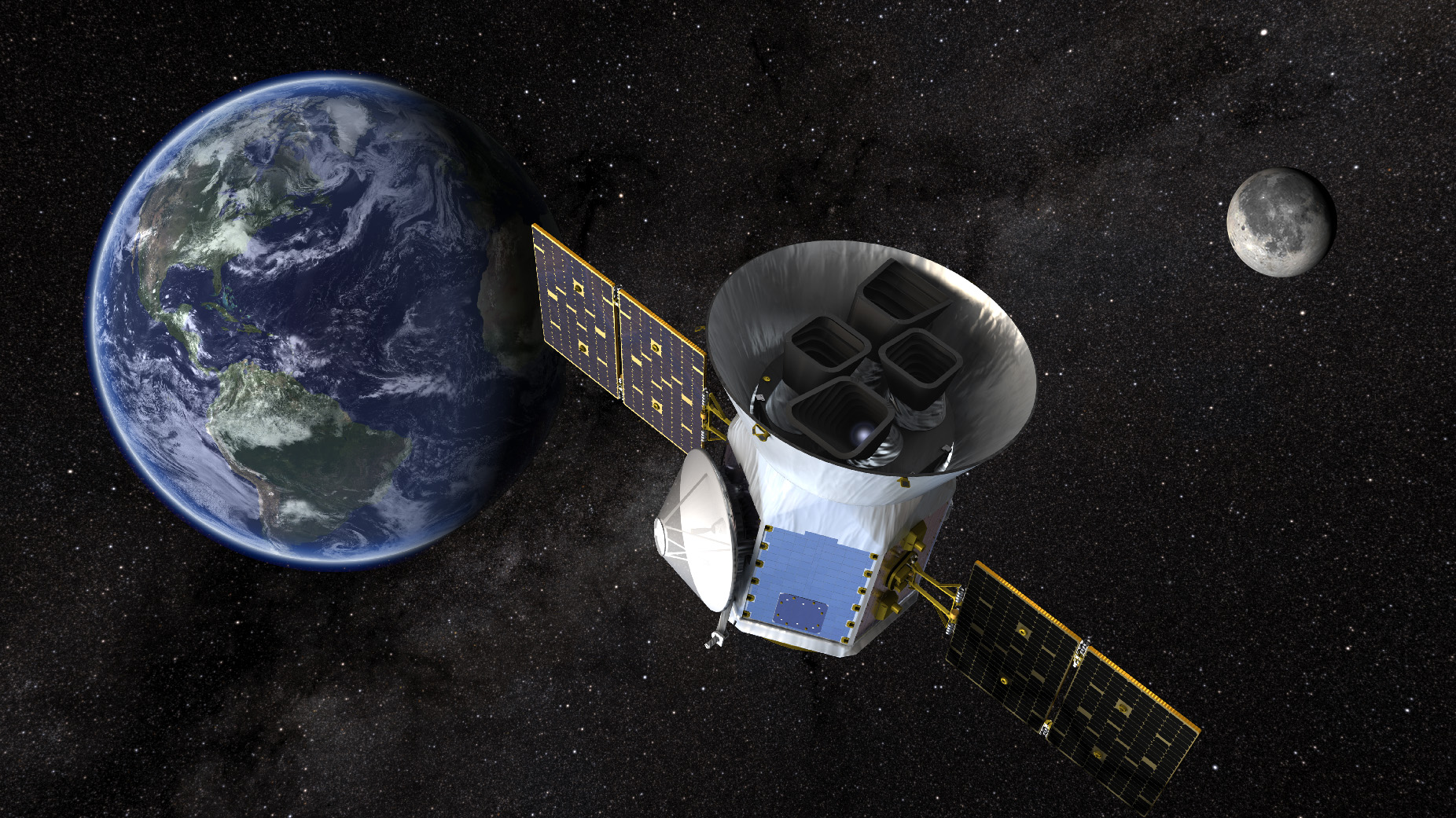Rare Neptune-size exoplanets may face solar superstorms from parent stars
The discovery of a Neptune-sized exoplanet around a massive star could explain why such planets are rarely found.

The discovery of a Neptune-sized exoplanet in orbit around a hot and bright giant star may help explain why the discovery of such worlds is rare.
Researchers from the University of California, Berkeley, have discovered a Neptune-sized planet orbiting a massive, bright star. The gas giant planet, named HD 56414 b , is being stripped of its atmosphere by its host star.
This implies that Neptune-sized planets around bright massive stars could be stripped of their outer gas layers by harsh stellar radiation. This process would reduce these planets down to a barely detectable core, potentially explaining why astronomers don't find more of them.
Related: Exoplanets: Worlds Beyond Our Solar System
"It's one of the smallest planets that we know of around these really massive stars," UC Berkeley graduate student Steven Giacalone, said in a statement. "In fact, this is the hottest star we know of with a planet smaller than Jupiter. This planet's interesting first and foremost because these types of planets are really hard to find, and we're probably not going to find many like them in the foreseeable future."
Even though it is one of the smallest planets spotted around such a star, HD 56414 b— spotted by NASA's TESS mission as it transited the face of its star — is still 3.7 times the size of Earth. The Neptune-sized planet is so close to its stars that whips around it in just 29 Earth days.
In the three decades since the discovery of the first planet outside the solar system in 1992, astronomers have discovered around 5,000 worlds around other stars. Yet, the discovery of exoplanets strongly favors planets around stars smaller than the sun — red dwarfs — or stars slightly more massive than our average-sized star. Around 99 percent of exoplanet discoveries fit this profile.
Get the Space.com Newsletter
Breaking space news, the latest updates on rocket launches, skywatching events and more!
In addition to this, most of the exoplanets discovered thus far are Jupiter-sized worlds close to their parent star.
Very few exoplanets are discovered around the largest stars, or A-type stars, which also happen to be the brightest, hottest, and shortest-lived stellar bodies. And even fewer of these worlds are small in stature.
That means that less than one percent of the gas giants seen around massive stars are less massive than Jupiter.
This could be in part because Jupiter-sized worlds, with greater gravitational influence, can hold on tighter to their atmospheres than smaller, Neptune-sized planets, despite both worlds having 'puffy' gaseous compositions.
"There's this balance between the central mass of the planet and how puffy the atmosphere is," Giacalone explained. "For planets the size of Jupiter or larger, the planet is massive enough to gravitationally hold on to its puffy atmosphere. As you move down to planets the size of Neptune, the atmosphere is still puffy, but the planet is not as massive, so they can lose their atmospheres more easily."
This means Jupiter-sized worlds are less likely to be reduced to barely visible cores, even when close to a parent star.

Warm and hot Neptunes
HD 56414 b is what astronomers call a 'warm Neptune' located just outside the zone around a star in which a planet would be violently stripped of its atmosphere. Its discovery could imply that in closer orbits to bright A-type stars is a wealth of unseen 'hot Neptunes' separated from their outer layers and left as smoldering cores.
It is already well-established by astronomers that Neptune-sized planets orbiting less massive, sun-like stars are rarer than expected. The lack of detection of such worlds is described as the 'hot Neptune desert' but it isn't certain whether such a lack of detection of hot Neptunes around A-type stars is for the same reason, or if it is because these planets are challenging to detect because their parent stars are much brighter.
"Determining whether the hot Neptune desert also extends to A-type stars provides insight into the importance of near-ultraviolet radiation in governing atmospheric escape," UC Berkeley assistant professor of astronomy, Courtney Dressing, said in the statement.
Resolving this mystery and closing the gap in the exoplanet catalog will likely require more sensitive detection methods. Dressing and Giacalone will continue to hunt for Neptune-sized worlds around A-type stars and to search the hot-Neptune desert.
In the meantime, the discovery of this warm-Neptune could help astronomers better understand how the atmospheres of exoplanets evolve and where these planets form, and whether they move inward or outward in their system as they evolve.
"This result is important for understanding the physics of atmospheric mass loss and investigating the formation and evolution of small planets. There's a big question about just how do planets retain their atmospheres over time," Dressing said. "When we're looking at smaller planets, are we looking at the atmosphere that it was formed with when it originally formed from an accretion disk? Are we looking at an atmosphere that was outgassed from the planet over time?"
Dressing continued by adding that if astronomers were able to look at planets receiving different amounts of light from their stars — especially at different wavelengths of light — it could help model how a planet keeps its atmosphere over time.
The study of A-type stars should allow this as planets that orbit them closely receive much more near-ultraviolet radiation than X-ray radiation or extreme ultraviolet radiation.
The researchers concluded that the proximity of this planet to its star in the system which is just 420 million years old — much younger than our sun's age of 4.6 billion years — means radiation is stripping its atmosphere.
HD 56414 b will still hang on to its atmosphere for 1 billion years, long enough to see its parent star reach the end of its fuel for nuclear fusion. This will result in the star undergoing gravitational collapse triggering a supernova explosion and possibly leaving behind a neutron star or black hole.
The team's research is featured in a paper published in the Aug. 12 edition of The Astrophysical Journal Letters
Follow us on Twitter @Spacedotcom or on Facebook.
Join our Space Forums to keep talking space on the latest missions, night sky and more! And if you have a news tip, correction or comment, let us know at: community@space.com.

Robert Lea is a science journalist in the U.K. whose articles have been published in Physics World, New Scientist, Astronomy Magazine, All About Space, Newsweek and ZME Science. He also writes about science communication for Elsevier and the European Journal of Physics. Rob holds a bachelor of science degree in physics and astronomy from the U.K.’s Open University. Follow him on Twitter @sciencef1rst.









